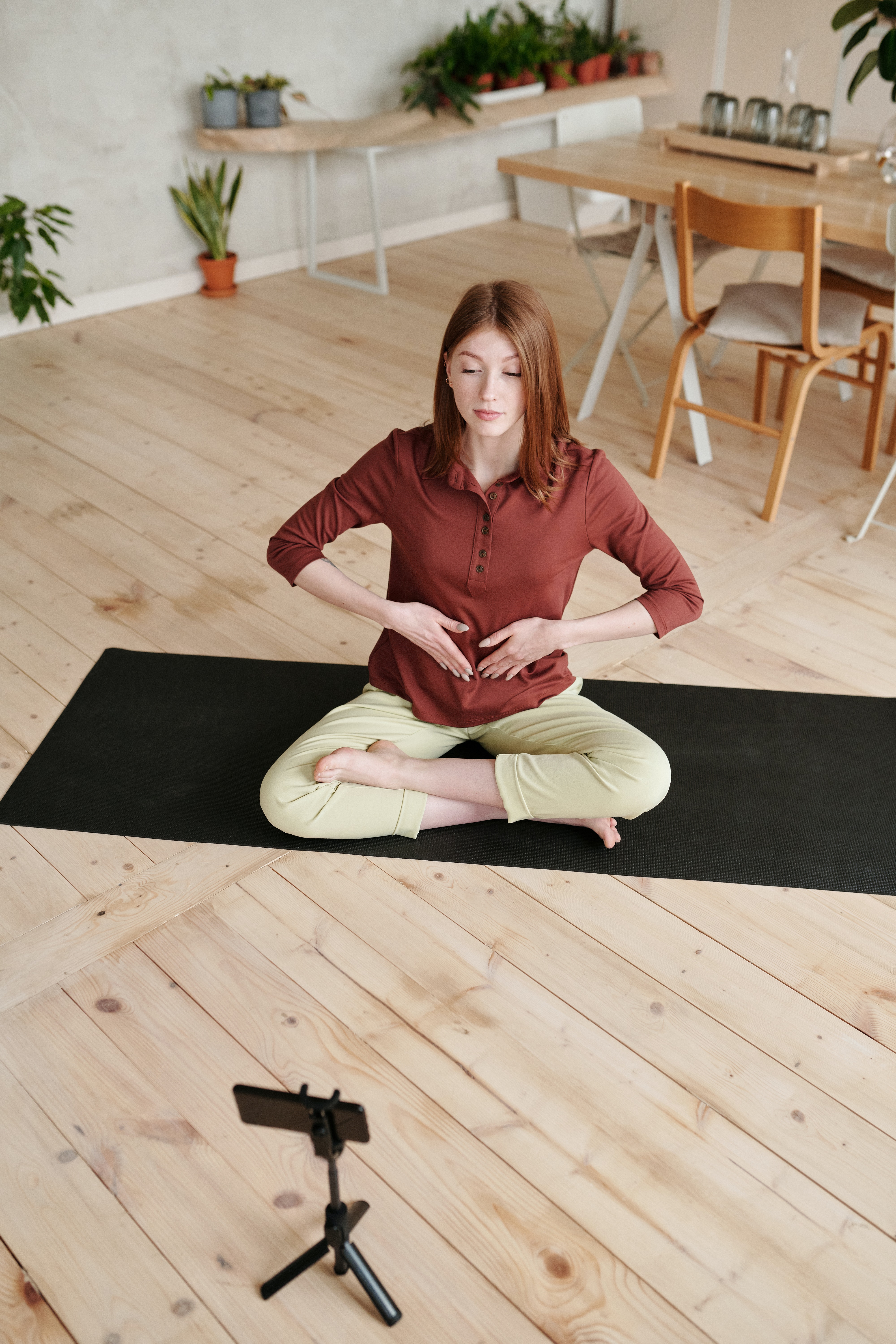About 7 or 8 years ago, I used to lose my voice (especially after each and every Saturday party). I came to see an ENT doctor to check my Larynx. The doctor didn’t give me any medication, but referred me to a speech therapist. Do you know what a speech therapist does? “She’d roll her sleeves and start to train my wrecked voice” I thought. But I was wrong!
The first thing she did was to check the way I breathe. To my surprise, the primary cause of my hoarseness was not my larynx, but the fact that I had been breathing wrong all my adult life. And there began my journey with breathing.
We all do it wrong
We can go three weeks without food, three days without water, but can’t hold our breath for more than three minutes? Yet, when thinking about improving our health, most of us focus only on nutrition – what we should or shouldn’t eat or drink – while breathing is the first thing we need to consider.
Research shows that breathing can be a decisive factor in determining our health and longevity. We breathe an average of 23,000 to 25,000 times a day. If you breathe wrong, repeat 23,000 times a day, day after day, year after year, then it’s the way you breathe that destroys your health faster than any diet. Bad breathing directly or indirectly leads to problems like insomnia, asthma, diabetes, weakened immune system, memory impairment, back, shoulder and neck pain. And in my case, it wrecked my larynx.
Believe it or not, 9 out of 10 adults are breathing incorrectly, according to Dr Belisa Vranich, author of ‘Breathe: The Simple, Revolutionary 14-Day Program to Improve Your Mental and Physical Health’. To find out if you are breathing wrong, let’s do a small test.
Take a deep breath and place your hand on your chest. Breathe in and out deeply. Repeat several times.
If you notice that your shoulder and chest rise when you inhale and fall when you exhale, you’re breathing through your chest, which is an anatomically incongruous way to breathe, said Dr Vranich.
How is our body designed to breathe?
We are born to breathe with our lower torso. Observe the breathing of an infant or young child and you’ll see, as his or her belly expands on the inhalation and contracts on the exhalation. Adults, on the contrary, on the inhalation, the abdomen collapses and the shoulders rise. On the exhale, the abs rise slightly while the shoulders and chest drop. That’s how I used to breathe before I was taught to breathe properly.
I can still remember times when I tried to breathe deeply but only got very little air and felt like something was blocking my chest from breathing. I even tried to open the window because I thought the room was stuffy.
But in fact, I was only using the upper part of my lung, which is approximately 25% of the lung capacity. When this part is inflated, it will be blocked by the chest cavity because the chest is not meant for breathing. Meanwhile, the largest part of the lung located at the bottom, which occupies 75% of the lung capacity, is barely used. How does this happen?
That’s because our body is designed to breathe with the diaphragm rather than the chest.
The diaphragm is a large dome-shaped muscle that divides our torso into two parts, the thoracic cavity and the abdominal cavity. The most important role of the diaphragm is to help us breathe.
As you inhale, the diaphragm contracts and shifts from the dome to the plane, pulling the inflated lungs downward. Then, to make room for the lungs and diaphragm, your digestive organs are pushed out, so your belly swells. As you exhale, the diaphragm returns to a dome and pushes the lungs to collapse, your digestive system resumes its place, and your abdomen collapses.
So why do we adults often breathe poorly?
We usually begin to shift from diaphragmatic to chest breathing when we reach school age and start sitting for long hours each day. When we sit, especially hunchbacked, the chest cavity and abdominal cavity will press against each other, so there is not enough room for the lungs to expand when you breathe. The older we get, the more we sit. And we inadvertently switch to chest breathing at some point.
The second reason is the habit of wearing tight pants. By wearing tight pants or using a belt, you are locking down your abdomen, preventing the digestive organs from being pushed out to make room for the lungs. Women, especially after giving birth, often wear a corset. Not only does this damage your spine and digestive system, but it also prevents you from breathing properly.

And what are the effects of improper breathing on our health?
The first consequence of wrong breathing is that you take in less air each time you inhale, so you have to breathe faster and more often to get the oxygen your body needs.
If you think that the more air you breathe in, the more oxygen you get, then you’re probably wrong. In fact, the amount of air you breathe doesn’t dictate the amount of oxygen your body absorbs.
According to James Nestor, author of “Breathing – The New Science of a Lost Art”, if you breathe correctly, you will breathe an average of 12-18 times a minute. But when you breathe through your chest, you tend to breathe rapidly. Especially when you are stressed, anxious, or when you have respiratory problems, you can reach 20 times in a minute. At that rate, your body can only use 50% of the air inhaled. Most of it barely makes it into your mouth, throat, and bronchi. By breathing rapidly and shallowly, you are wasting most of the air you inhale. When you get down to 12 breaths per minute, you can benefit 70% of the air you inhale. If you breathe very slowly – around 6 breaths a minute, your cells and blood vessels can take in 85% of the air inhaled.
Second, when breathing through your chest, you mainly use the muscles in your neck and shoulder, while these muscles were not meant to be involved in the respiratory process. Even if it’s just a small movement at a time, but it’s 23 000 times a day, millions of times a year, year after year. As a result, these muscles never rest. This is why we often experience neck and shoulder pain.
But more importantly, a restless body leads to restless mind.
Breathe properly dictates the brain’s state of stress or relaxation
Breathing right is extremely important because it is directly related to the relaxed or stressed state of the brain. The connection between the body’s condition and the brain’s response is explained by the vagus nerve – the longest nerve of the autonomous nervous system. Vagus nerve runs from the brain to all parts of the body. Unlike other nerves, the vagus nerve transmits signals in two directions. From the brain to the whole body, and from the body back to the brain.
When your body relaxes, the vagus nerve sends a signal to the brain, activating the parasympathetic nervous system, which is responsible for relaxation response (usually called ‘rest and digest’). In physical therapy, this is called bottom-up relaxation, or relaxing the body first to help relax the mind.
Conversely, if your body, especially areas like the shoulders, back and neck, is constantly in a state of work and stress, the vagus nerve will send signals to the brain to activate the sympathetic nervous system, which is responsible for the stress response (usually called ‘fight or flight’). This will keep you in a state of chronic stress and anxiety.
You may not know it, but stress wreaks as much havoc on your health as smoking. Stress weakens the immune system, causing high blood pressure, diabetes, depression, headaches, and countless other dangerous problems.

Practice belly breathing
The first step to stimulate the diaphragm to work is to practice abdominal breathing. You can stand, sit, or lie down. For beginner, the easiest position to practice is lying down, as it allows your abdominal wall to come out more easily. Relax your belly, back, shoulder and thigh muscles.
Put one hand on your chest and another on your stomach.
Breathe naturally. As you inhale, feel your abs inflate like a ball and the hand on your belly is pushed up. Feel your diaphragm contract and your lungs expand downward.
Exhale very slowly, so that the out-breath is longer than the in-breath. When it does, your diaphragm will return to its dome shape, and your belly will collapse.
Make sure the hand on your stomach moves up and down as you breathe, and the hand on your chest lifts very little.
You don’t need to work hard to push your abs up, just relax and breathe gently.
Practice belly breathing for 5 minutes.
Practice 360° breathing
While practicing belly breathing helps to stimulate the diaphragm, the more effective way to breathe is 360° breathing. In this practice, the entire lower torso including abdominal muscles (front and both sides), intercostal muscles and back muscles are involved in your breathing process. When you inhale, all of these muscles will push outward, and when you exhale, they will contract simultaneously. Their opposite movement, front and back, left and right will create balance for your body and spine.
Put your hands on your hips. Begin to breathe and feel. Make sure your belly (in the front and on both sides), ribs and back push out as you inhale, and tighten when you exhale. Inhale and exhale for at least 5 minutes. Relax your body. That’s 360° breathing.
Do this exercise as often as you can, while standing, or sitting in front of the computer, in the car.
A quick dose of calming cure
If you don’t have time to practice or if you are feeling stressed or anxious and need an urgent dose of calming cure – don’t worry. Lean back in a chair. Place your hand on your stomach and take a deep breath. Make sure the out-breath is longer than the in-breath. Make sure your chest doesn’t move too much. Make sure your entire abs, ribs, hips and back work in harmony with your diaphragm as you breathe. That’s how you regain your composure and relax.


